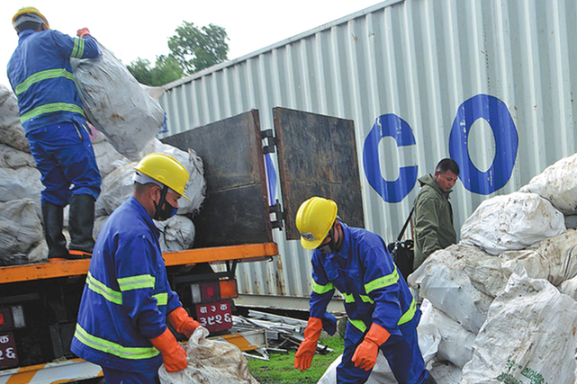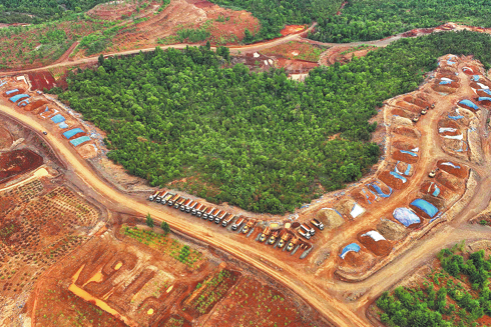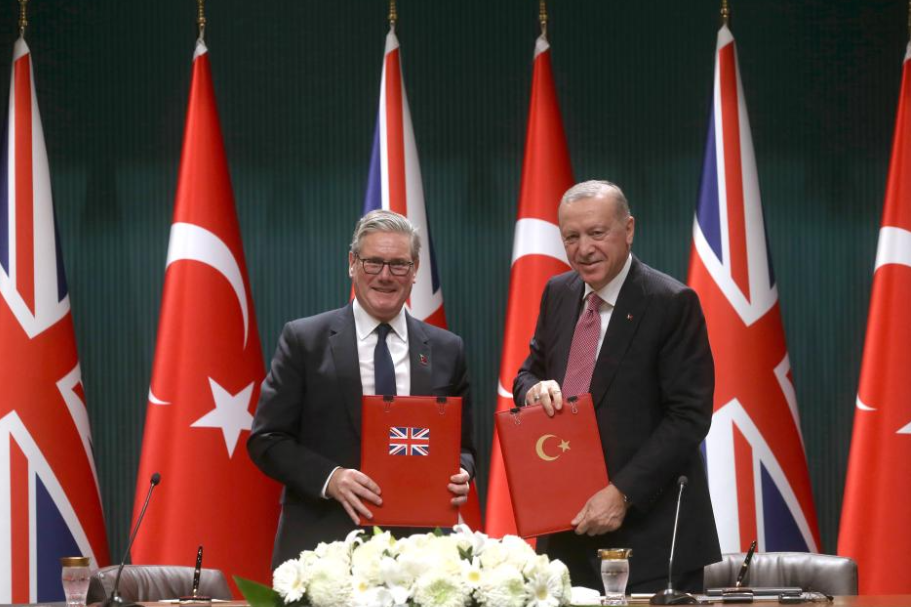Five decades of friendship: Bangladesh's trade and BRI-led growth

This month, on Oct 4, 2025, China and Bangladesh celebrated a significant milestone: the 50th anniversary of their diplomatic relations.
Top leaders from the two countries exchanged warm congratulatory messages, as their reaffirmation of a "shared future" underscores the two nations' unity and mutual goals. This golden jubilee is not just a celebration of enduring friendship but a testament to the transformative power of trade and investment cooperation.
The relationship between Bangladesh and China is a unique and compelling narrative of South-South cooperation. It showcases how the two nations, with different political systems but a shared commitment to national development and global peace, can forge a partnership that not only benefits their people but also contributes to regional stability.
In the tapestry of global economic partnerships, the China-Bangladesh relationship stands as a compelling narrative of evolving trade dynamics and strategic cooperation.
As Bangladesh, a country that was previously classified as a least developed country (LDC) due to its low income, human resource weakness, and economic vulnerability, navigates its journey to become a middle-income economy, its economic ties with China have transformed from mere bilateral trade exchanges to a comprehensive strategic partnership embedded within China's Belt and Road Initiative (BRI).
In 2016, China pledged $24 billion in loans and aid, marking Bangladesh's most significant foreign investment commitment to date, and the country's formal entry into the BRI. This substantial capital inflow has been directed towards vital infrastructure projects such as power plants, bridges, highways, and industrial parks.
These investments are not just financial transactions, but deliberate efforts to integrate Bangladesh into China's broader vision of regional connectivity and economic development.
The introduction of China's BRI in 2013 has brought about a significant transformation in bilateral trade between China and Bangladesh, as evidenced by a comparison of trade values before and after its launch.
According to the World Integrated Trade Solution (2025) data, from 2002 to 2012, prior to the BRI, Bangladesh's imports from China steadily increased from $922 million to $6.4 billion, reflecting a growing trade relationship.
However, after the BRI's inception in 2013, imports surged dramatically, reaching $20.2 billion by 2022. This sharp increase in trade volume underscores the BRI's profound influence on deepening economic ties.
This increase in trade results from the BRI framework's strategic strengthening of economic cooperation, which prioritizes market integration, infrastructure development, and connectivity. Market integration refers to the process of aligning the economic policies and regulations of different countries to facilitate trade and investment.
According to the data, the BRI has facilitated the expansion of commercial links, allowing Bangladesh to import more industrial and capital-intensive items while solidifying China's position as its biggest trading partner. The sharp difference between the pre- and post-BRI eras highlights how the initiative has revolutionized bilateral economic interaction.
In 2025, the head of the interim government of Bangladesh, Dr Yunus, made a trip to China, demonstrating the expanding impact of the BRI in Bangladesh.
Firstly, he wants to use the BRI to fund green energy, digital expansion, and infrastructure development to address the notable trade imbalance. Secondly, these investments, which present chances to improve industrial capacity and connectivity, are essential for Bangladesh's expansion.
By using the BRI's structure to cultivate long-term strategic alliances, Dr Yunus hopes to transform Bangladesh's economy and strengthen its place in the region.
Bangladesh's import capacity and trends have been significantly impacted by the infrastructural development carried out under the BRI framework. Increased trade volumes, especially imports from China, have been made possible by upgraded port facilities, better transportation systems, and expanded energy infrastructure.
Consumer products, industrial equipment, and raw materials necessary for Bangladesh's manufacturing sector, particularly its rapidly growing apparel industry, are all included in these imports. There is a complex interplay of opportunities and challenges related to Bangladesh's economic growth, and the BRI facilitates these imports.
China has been Bangladesh's largest trading partner for 15 consecutive years, with bilateral trade exceeding $23.9 billion in 2023.
Bangladesh's exports to China, on the other hand, have shown a promising trend, increasing steadily and significantly. They peaked at just $740 million in 2021 from $13 million in 2003. The cornerstone of the China-Bangladesh trade partnership is the commitment to fair and balanced exchanges.
China has consistently taken steps to address Bangladesh's trade deficit — a concern that has occasionally arisen in bilateral talks.
Addressing trade imbalance concerns, Bangladesh was enjoying benefits for 8,256 products with duty-free access to the Chinese market from July 2020 to August 2022. As a LDC, Bangladesh has been granted the facility, which includes 5,161 (97 percent) more Bangladeshi products to enjoy zero tariff treatment in the Chinese market in 2020.
The extension of the zero-tariff benefit from 97 percent to 98 percent and then to 99 percent raised the product number to 8,930 from 8,256, effective from Sept 1, 2022.
Bangladesh is poised to reap significant benefits from 100 percent duty-free access to the Chinese market for all its products starting Dec 1, 2024, as part of China's initiative to support least developed countries.
China's commitment to offer duty-free, quota-free access to Bangladeshi products until 2028, even after Bangladesh graduates to a developing nation status, is a promising sign for the future of the trade relationship. And a Free Trade Agreement (FTA) is under discussion to potentially secure longer-term access.
China has maintained its economic cooperation with Bangladesh throughout the pandemic. Ongoing infrastructure projects, trade facilitation, and investment commitments have continued, providing stability and support for Bangladesh's economy during these challenging times.
China's sustained economic cooperation has helped mitigate the adverse effects of the pandemic on Bangladesh's overall development and recovery efforts.
The impact of trade partnerships on the lives of ordinary people in both countries cannot be overstated. It is the arteries of progress, fuelling economic growth and development, creating jobs, and most importantly, enhancing connectivity for millions of Bangladeshis.
By fostering collaboration, enhancing trade facilitation, and expanding export potential, Bangladesh and China can build a robust trade partnership that benefits both countries for decades to come. This milestone serves not only as a celebration of past achievements but also as a springboard for future growth and cooperation.
Mohammad Saiyedul Islam, PhD, is a senior lecturer and researcher at the School of Overseas Education (School of Foreign Languages), Sanming University, Fujian province, and a senior research fellow at Daffodil International University Belt and Road Research Centre in Bangladesh.
The views don't necessarily represent those of China Daily.
- World Insights: Xi's new proposals chart new course for women's cause, experts say
- Xiplomacy: How China helps empower women from Asia to Africa
- Bangladesh's young boy recovering after undergoing specialized surgery in Hubei
- As history's arc unfolds, peace still paramount
- Beijing, Dhaka to accelerate cooperation





























